If you’ve ever wondered what the NdFeB magnet strength really is and why they dominate so many high-tech applications, you’re in the right place. Understanding NdFeB magnet strength is crucial whether you’re an engineer designing precision devices, a hobbyist building powerful tools, or a buyer sourcing reliable magnets. This guide cuts through the jargon to explain what makes these rare-earth magnets stand out—from key performance metrics to real-world factors that impact their magnetic power.
Ready to uncover the secrets behind NdFeB magnet strength and find out why NBAEM is a go-to supplier for top-quality magnets made in China? Let’s dive in.
What is NdFeB Magnet Strength
NdFeB magnet strength refers to the magnetic power and performance of neodymium-iron-boron magnets, which are among the strongest permanent magnets available. This strength is primarily defined by several key magnetic properties that describe how effectively the magnet can generate and maintain a magnetic field.
Key Magnetic Properties Defining NdFeB magnet Strength
- Magnetic Flux Density (B): Represents the concentration of magnetic lines of force, usually measured in Gauss or Tesla. Higher flux density means a stronger magnet field.
- Maximum Energy Product (BHmax): Measured in Mega-Gauss Oersteds (MGOe), BHmax indicates the maximum magnetic energy stored in the magnet. It is a critical value for assessing overall magnet strength. NdFeB magnets typically range from 33 to 55 MGOe, with higher values representing more powerful magnets.
- Coercivity (Hc): This measures the magnet’s resistance to becoming demagnetized. High coercivity means the magnet can maintain strength even when exposed to opposing magnetic fields or external factors.
- Remanence (Br): Also called residual magnetization, remanence is the magnet’s remaining magnetic field after being fully magnetized. NdFeB magnets usually feature high remanence, contributing to their strong lasting magnetism.
Typical Values for NdFeB Magnets
| Property | Typical Range | Units |
|---|---|---|
| Maximum Energy Product (BHmax) | 33 – 55 | MGOe (Mega-Gauss Oersteds) |
| Coercivity (Hc) | 900 – 2000 | kA/m |
| Remanence (Br) | 1.0 – 1.4 | Tesla (T) or 10,000 – 14,000 Gauss |
Understanding these properties helps clarify why NdFeB magnets outperform many other types in terms of strength and reliability. The balance between high BHmax, strong coercivity, and high remanence makes NdFeB magnets the preferred choice when maximum magnetic force is essential. For more detailed insights into permanent magnetism basics, check out What is Permanent Magnetism.
Factors Influencing NdFeB Magnet Strength
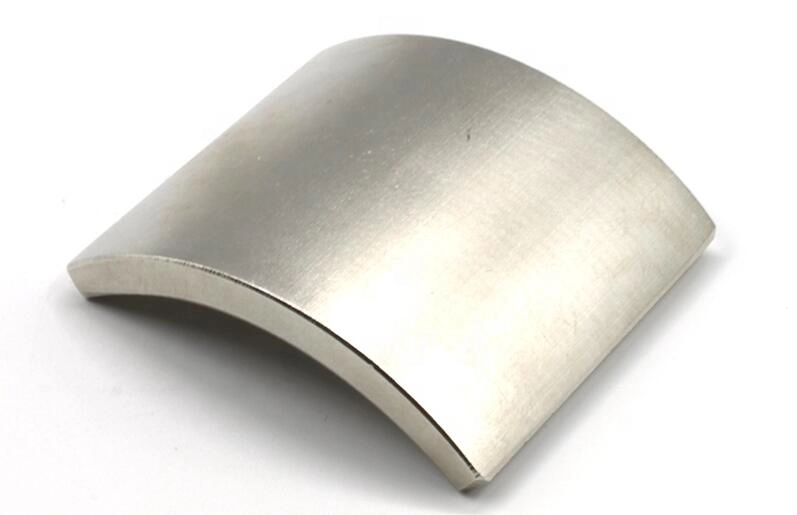
Several factors affect the strength of NdFeB magnets, making it important to understand them when choosing the right magnet for your application.
Composition and Material Grade Variations
NdFeB magnets come in different grades like N35, N42, N52, etc. Each grade indicates a specific maximum energy product (BHmax), which directly impacts the magnet’s strength. Higher grades like N52 have stronger magnetic flux density, making them suitable for demanding applications.
Magnet Size and Shape Effects
The size and shape of the magnet influence its overall magnetic performance. Larger magnets typically hold more magnetic flux, and shapes designed to focus magnetic lines, such as rings or blocks, can deliver better field strength depending on the use.
Temperature Impact and Demagnetization
NdFeB magnets can lose strength at high temperatures. Their Curie temperature (typically 310–400°C) marks the point where the magnet loses all magnetism. Even below this, heat can cause partial demagnetization, especially if the magnet’s coercivity isn’t high enough. This is critical in applications exposed to heat or temperature fluctuations.
Manufacturing Quality and Microstructure
The way a magnet is made affects its strength. Better control over the microstructure during production leads to magnets with improved coercivity and remanence, retaining their strength longer and resisting demagnetization.
Protective Coatings and Environmental Conditions
NdFeB magnets are prone to corrosion, which can reduce their performance over time. Protective coatings like nickel, epoxy, or zinc shield the magnets from moisture and chemicals, helping maintain their magnetic strength, especially outdoors or in harsh environments.
Understanding these factors helps in selecting the right grade and treatment to ensure your NdFeB magnets perform reliably. For more on how different magnet types compare, check out our detailed Smco vs NdFeB magnet strength guide.
How NdFeB Magnet Strength is Measured
Measuring the strength of NdFeB magnets involves common industry methods to ensure accuracy and consistency. The key measurement focuses on magnetic flux density, energy product, and coercivity, which help determine how strong and durable a magnet is.
Common Testing Methods and Standards
- Magnetic Flux Density (Gauss or Tesla): Measures the magnetic field produced on the magnet’s surface.
- Maximum Energy Product (BHmax, measured in MGOe): Reflects the magnet’s stored energy—the higher the value, the stronger the magnet.
- Coercivity: Indicates resistance to demagnetization by external fields or heat.
These tests follow standards like ASTM and ISO that many suppliers adhere to for reliable results.
Measuring Equipment Overview
- Gaussmeters: Used to measure the magnetic flux density directly, usually suitable for surface testing.
- Magnetometers: More advanced tools that can assess overall magnetic properties including BHmax and coercivity.
- Fluxmeters: Used to measure the total magnetic flux, giving insight into the magnet’s overall strength.
Interpreting Test Results
When you get data from testing, you’ll see numbers like:
- Flux density in kA/m or Gauss (1 Tesla = 10,000 Gauss)
- Energy product in MGOe (Mega Gauss Oersted) — typical NdFeB magnets range from 30 to 52 MGOe.
- Coercivity in kA/m tells you how well the magnet holds up under external forces.
For everyday use, higher BHmax means a more powerful magnet, while higher coercivity ensures stability in demanding environments. Knowing these values helps pick the right magnet grade for your specific need, whether it’s for electronics, motors, or industrial applications.
NdFeB Magnet Strength and The Grade
NdFeB magnets come in a range of grades that differ mainly in their magnetic strength and temperature tolerance. Common grades you’ll hear about include N35, N42, and N52. The number after the “N” roughly indicates the maximum energy product (BHmax), which measures the magnet’s overall strength. For example, an N35 magnet has a BHmax around 35 MGOe, while an N52 can reach up to 52 MGOe, making it one of the strongest NdFeB grades available.
When choosing the right grade for your application, consider:
- Strength Needs: Higher grades like N50 or N52 are best for compact, high-performance uses where max strength is essential.
- Temperature Resistance: Some grades offer better coercivity, meaning they resist losing magnetization at higher temps.
- Cost Efficiency: Lower grades like N35 or N38 provide solid strength at a more affordable price, suitable for less demanding uses.
Comparing grades helps find the sweet spot between performance and budget. For example, N42 offers a noticeable bump in strength over N35, with decent heat resistance for most electronic or automotive uses. On the other hand, premium grades like N48 and N52 are ideal in motors or devices needing maximum power in a small size.
In :
| Grade | Maximum Energy Product (MGOe) | Ideal Use Case |
|---|---|---|
| N35 | 35 | Basic industrial, general use |
| N42 | 42 | Electronics, small motors |
| N48 | 48 | Higher performance, robotics |
| N50 | 50 | High-end motors, medical devices |
| N52 | 52 | Compact high-strength magnets |
Picking the right NdFeB magnet grade means balancing strength requirements, temperature limits, and cost—all important for getting the best results in your US-based projects or products.
Comparing NdFeB Magnet Strength with Other Magnet Types
When it comes to strength, NdFeB magnets stand out as the most powerful among common rare earth magnets. Here’s how they compare with others:
NdFeB vs Samarium Cobalt (SmCo)
- Strength: NdFeB magnets generally offer higher maximum energy products (up to 52 MGOe) compared to SmCo (around 30 MGOe). This means NdFeB magnets are stronger for their size.
- Temperature: SmCo magnets excel in high-temperature environments and resist demagnetization better than NdFeB. NdFeB magnets can lose strength above 150–200°C unless specially graded.
- Cost: NdFeB magnets are usually less expensive, making them popular for large-scale manufacturing.
NdFeB vs Alnico
- Strength: NdFeB magnets have a much stronger magnetic strength versus Alnico, which offers lower coercivity and maximum energy product.
- Durability: Alnico magnets have good temperature stability and corrosion resistance but are bulky compared to NdFeB.
- Use cases: Alnico is often chosen for sensors or loudspeakers where high temperature and stability matter more than raw strength.
NdFeB vs Ferrite (Ceramic) Magnets
- Strength: Ferrite magnets are the weakest in magnetic strength compared to NdFeB, with maximum energy products around 3–4 MGOe, much lower than NdFeB’s range.
- Cost and corrosion: Ferrite magnets are low cost and highly corrosion resistant, making them good for harsh environments where strength isn’t critical.
- Size: To match the strength of a small NdFeB magnet, a ferrite magnet must be much larger.
Advantages and Limitations
- NdFeB magnets offer the highest magnetic strength, ideal for compact, high-performance applications like EV motors and electronics.
- SmCo magnets provide better performance in high-heat or harsh chemical settings but at a higher price.
- Alnico magnets give excellent temperature stability but with lower magnetic power.
- Ferrite magnets are budget-friendly and corrosion resistant but far weaker than NdFeB.
Choosing the right magnet depends on balancing strength, cost, operating environment, and size requirements. For most applications where strength matters, NdFeB magnets usually lead the way.
Applications Leveraging NdFeB Magnet Strength
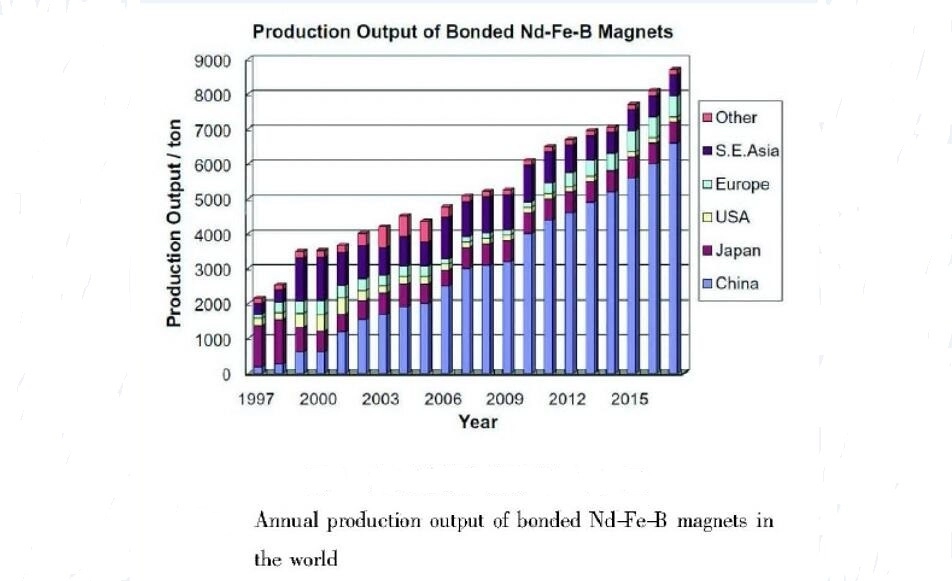
Phote from Stanford magnets
NdFeB magnets are popular in many industries because of their unmatched strength and reliability. Here’s where their magnetic power truly makes a difference:
- Electronics and Micro-Motors: Small devices like headphones, hard drives, and drones use NdFeB magnets for efficient, compact performance. Their strong magnetic flux density improves motor responsiveness and power in tight spaces.
- Renewable Energy Wind Turbines: NdFeB magnets are key in wind turbine generators. Their high maximum energy product means turbines can generate more power with smaller, lighter components, improving overall efficiency.
- Automotive Electric Vehicles: EV motors rely on the strong magnetic force of NdFeB magnets for high torque and better energy efficiency. This leads to lighter cars with longer driving ranges.
- Medical Devices: Precision instruments like MRI machines and hearing aids use NdFeB magnets for their stability and strength, ensuring consistent performance in critical applications.
- Industrial Machinery and Robotics: From robotic arms to conveyor belts, these magnets provide the necessary power and control. Their resistance to demagnetization supports durability in demanding environments.
Using NdFeB magnets in these fields means better performance, smaller size, and longer-lasting equipment—qualities that meet the needs of U.S. industries focused on innovation and efficiency.
Buying High-Strength NdFeB Magnets from China Why Choose NBAEM
When it comes to sourcing high-strength NdFeB magnets from China, NBAEM stands out for several reasons. Their expertise in rare earth magnets ensures you get reliable, strong magnets that meet your needs.
Expertise and Quality Assurance
NBAEM has years of experience in producing and supplying NdFeB magnets with consistent magnetic performance. Every batch undergoes strict quality checks to guarantee high maximum energy product (BHmax), coercivity, and remanence values that US customers expect.
Customization and Grade Options
Whether you need N35, N42, N52, or specialized grades, NBAEM offers a wide selection. They also handle custom shapes and sizes to fit your specific application, from electronics to automotive.
Certifications and Compliance
NBAEM products comply with international standards like RoHS and REACH, ensuring safe, environmentally friendly magnets suitable for US markets.
Local Support with Global Reach
| Feature | Details |
|---|---|
| Customer Support | Responsive US-based service |
| Shipping | Reliable global logistics |
| Technical Assistance | Expert guidance on magnet grades and specs |
NBAEM combines global manufacturing strength with local support to make buying high-strength NdFeB magnets a smooth experience.
Maintenance Tips to Preserve NdFeB Magnet Strength
Keeping your NdFeB magnets strong over time means treating them right. Here’s how you can preserve their magnetic power:
-
Proper Storage and Handling
Store magnets in a dry, cool place away from metal objects to avoid accidental damage or losing magnetism. Use spacers or keep them separated in packaging to prevent chips or cracks. Handle with care since NdFeB magnets can be brittle.
-
Avoid High Temperatures
Heat is a major enemy of NdFeB magnets. Exposure above their maximum operating temperature causes loss of magnetization or permanent damage. Keep them well below their Curie temperature and check out temperature impact on NdFeB magnet strength for more.
-
Protect Against Corrosion
NdFeB magnets are prone to rust. Applying protective coatings like nickel, epoxy, or gold helps create a barrier against moisture and chemicals. Regular inspections and cleaning prevent buildup that can weaken magnets.
-
Use Protective Coatings When Needed
Coatings don’t just protect from corrosion—they also improve durability for harsh environments. Ask your supplier about coating options especially if magnets will be exposed to outdoor or industrial settings.
By following these steps, you’ll keep your high-strength NdFeB magnets performing reliably for years without unexpected loss in magnetic force.
If you want to know more about NdFeB magnet strength, please feel free to contact us.

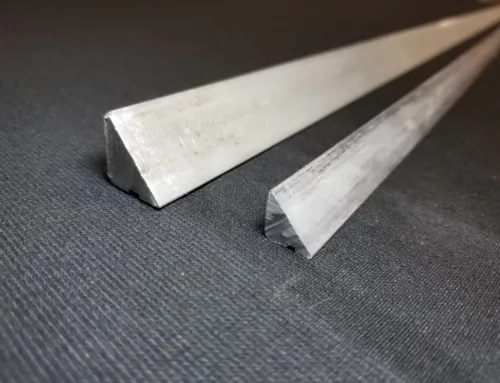
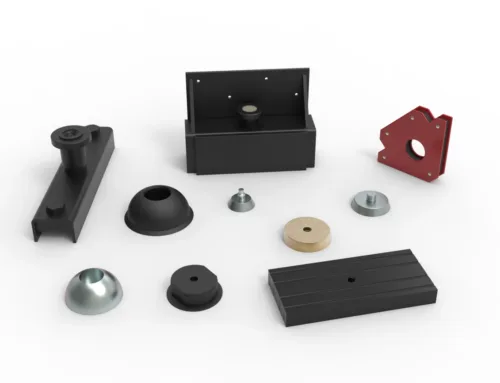
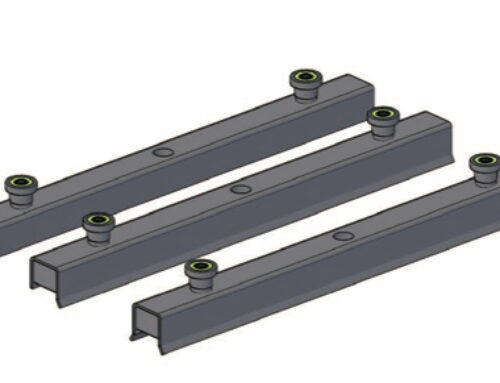
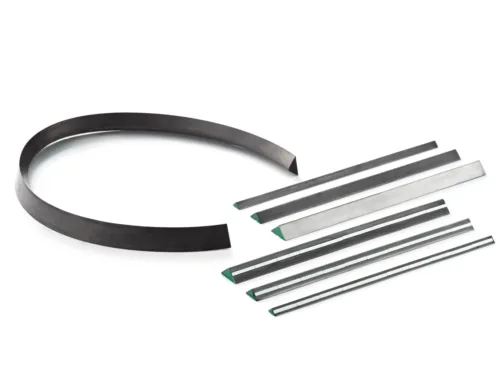
[…] more about the specifics behind high-quality NdFeB magnet strength and why magnet grade is […]